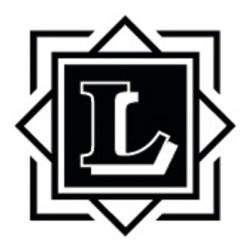Analysis
The claimants were trustees of a Jersey property unit trust formed on 17 March 2006 as the vehicle for the purchase of warehouse premises (the property). It was arranged that the vendor of the property would transfer the property to the trustees in return for units, which would then be sold by the vendor to the purchasers. The purchasers were Cantabria Investments Limited (Cantabria) as to 99% of the units and Catalunya Investments Limited (a wholly owned subsidiary of Cantabria) as to 1%. Cantabria was partly owned by Glenmac Limited (Glenmac). Half of Glenmac’s share capital was owned by a subsidiary of the defendant bank. Of the total purchase price of £28.1m, a loan of £21m was obtained from the defendant and secured over the property by a deed of guarantee and debenture dated 22 March 2006 (debenture). The trustees were registered proprietors and legal owners of the property.
The property was let until November 2007, but was thereafter vacant save for short-term licensees. Following a change in rating law in April 2008, the property became subject to unoccupied property rates after it had been empty for six months. Liability fell on the person entitled to possession, who when the property was unoccupied were the claimants. A liability for rates in excess of £1m accrued. Following a failure to repay the loan to the defendant, receivers sold the property for £14.63m in February 2010. There was insufficient to repay the loan to the defendant.
It was not in dispute that the claimants were entitled to be indemnified out of the trust assets for their liability for rates. At issue was whether the claimants were entitled to be paid from the trust assets prior to the defendant. The claimants argued that their right of indemnity and lien as trustees ranked ahead of the mortgage either on a true construction of the debenture or a term to be implied into the debenture.
The claimants submitted that:
- The issues should be approached against the circumstances of the transaction, which were to save tax for the benefit of the vendor and purchasers and not for the benefit of the claimants.
- It was accepted by all parties that the claimants were contracting in a specific capacity and were entitled to be protected in their personal capacity. This was recognised by clause 17.6 of the debenture.
- Clause 17.6 of the debenture provided that the claimants were liable only to the extent of ‘trust assets’ in their hands. This stood in distinction to the claimants’ right of indemnity against the ‘trust fund’ as defined elsewhere in the debenture. The right of indemnity against the ‘trust fund’ was an asset personally owned by the claimants. It was not available to the defendant because it did not form part of the ‘trust assets’. Only the ‘trust assets’ were available to the defendant.
- Alternatively, a term should be implied into the debenture to enable the claimants’ lien to rank in priority to the defendant’s mortgage owing to the circumstances, including the fact that the trust was established for the benefit of Cantabria, the indirect beneficial interest of the defendant in Cantabria and the minimal role of the claimants.
Held (dismissing the claim)
- (1) It was the property, not the property subject to the claimants’ lien, that was mortgaged. There was no express reservation of the lien. Clause 11.1 of the debenture directed the order of priority: first, the costs and expenses of the lender or receiver or administrator; second, the secured liabilities; and third, any surplus to the claimants (para [35]).
- (2) The term ‘trust assets’ had no significance except in identifying the assets comprised in the ‘trust fund’. There were a number of objections to the claimants’ submission that assets required to satisfy the claimants’ indemnity were not trust assets at all but personal assets:
- (a) it is because they are trust assets that the trustees are given a right of indemnity and they do not cease to be trust assets to the extent of the claimants’ claim;
- (b) the amount of the claimants’ right to indemnity will fluctuate, which would lead (if the claimants were correct) to a beneficial interest of a fluctuating amount in an undivided whole; and
- (c) what was mortgaged was the property, not some lesser interest in it (para [38]).
- (3) An implied term cannot contradict the express terms properly construed (para [45]). While the parties might reasonably have agreed for the claimants’ lien to rank ahead of the mortgage, they had not done so and the circumstances were not such as to require such a term to be implied (para [46]).

